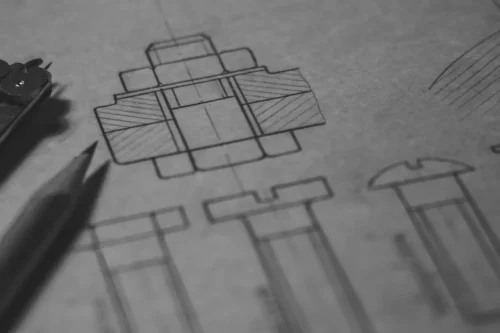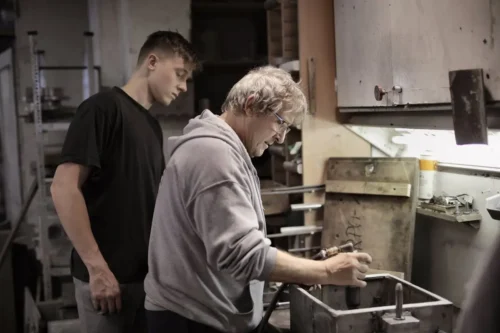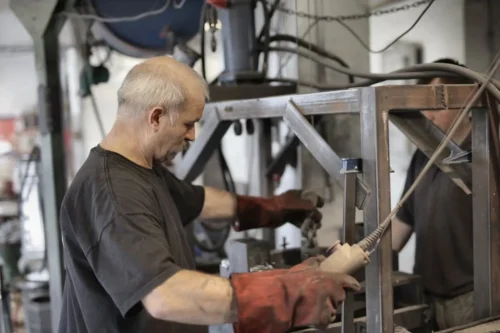Understanding reworks and their impact
Reworks in manufacturing occur when a product needs to be fixed or redone because it did not meet the desired standards initially. This can lead to delays in production and increased costs. Identifying and addressing the root causes of reworks is crucial to maintaining efficiency in manufacturing processes. Factors like poor quality control, miscommunication, or inadequate training can contribute to reworks. By implementing advanced manufacturing technologies and focusing on quality assurance, companies can reduce reworks and improve overall productivity.

The importance of productivity in manufacturing
Productivity is crucial in manufacturing as it directly affects efficiency and profitability. High productivity means getting more output with the same resources, leading to increased competitiveness in the market. Manufacturers strive to optimize productivity by streamlining processes, utilizing advanced technologies, and maximizing employee skills. In today’s fast-paced industry, maintaining high productivity is essential for staying relevant and meeting consumer demands effectively.
How advanced manufacturing technologies can reduce reworks
Advanced manufacturing technologies can help reduce reworks by improving precision and efficiency in the production process. These technologies can identify errors early on, allowing for quick adjustments to be made before products are completed. Additionally, automated systems can streamline production workflows, minimizing human errors that often lead to reworks. By integrating advanced manufacturing technologies into operations, companies can enhance productivity while decreasing the need for costly rework processes.
How advanced manufacturing technologies can reduce reworks
Leading the charge in smart manufacturing are a variety of technologies designed to streamline production processes. These technologies include advanced robotics, sophisticated data analytics, Internet of Things (IoT) devices, and artificial intelligence (AI). Through the use of these cutting-edge tools, manufacturers can optimize their operations, reduce downtime, improve product quality, and ultimately drive greater efficiency across their facilities.
Balancing reworks and productivity for optimal results
To achieve the best results in advanced manufacturing, it’s crucial to strike a balance between reducing rework and enhancing productivity. Here are some key points to consider:
- Reworks can hinder efficiency and increase costs, so addressing issues promptly is vital.
- Prioritizing productivity measures, such as streamlined processes and optimized workflows, can help minimize the need for reworks.
- Investing in advanced manufacturing technologies that focus on quality control and automation can aid in balancing reworks and productivity effectively.

Implementing quality control measures
To ensure the quality of your products, implementing quality control measures is crucial. This involves regular inspections and checks during the manufacturing process to identify any issues or defects. Some key steps to consider include:
- Setting clear quality standards: Define specific criteria that your products must meet to maintain consistency and customer satisfaction.
- Training employees: Educate your team on quality control procedures to ensure everyone understands their role in maintaining product standards.
- Utilizing advanced technologies: Incorporate modern tools and technologies to streamline the quality control process and detect issues more efficiently.
- Feedback and continuous improvement: Gather feedback from customers and employees to identify areas for enhancement and make necessary adjustments for better product quality.
By prioritizing quality control measures, you can strike a balance between reworks and productivity while delivering high-quality products to your customers.
Leveraging automation and robotics for efficiency
Robotics and automation technologies can help businesses boost productivity by streamlining processes. By incorporating these advanced technologies, companies can reduce manual labor tasks and increase output. Automation allows repetitive tasks to be completed faster and with fewer errors, while robotics can handle complex operations efficiently. When implemented correctly, these technologies can enhance overall efficiency and output quality, leading to a more streamlined production process.
Training and upskilling for a seamless transition
Companies must prioritize training and upskilling employees to adapt to advanced manufacturing technologies smoothly. Investing in training programs can enhance productivity and ensure a successful transition to reworks. Employees need to acquire new skills such as operating automated machinery and interpreting data analytics proficiently. Training should be ongoing to keep pace with evolving technologies and maintain a competitive edge in the market. Upskilling employees fosters innovation and improves overall efficiency, leading to a more successful integration of advanced manufacturing technologies in the workplace.
Conclusion: Achieving the balance for sustainable growth
To achieve sustainable growth, businesses must strike a balance between reworks and productivity when adopting advanced manufacturing technologies. By minimizing reworks and maximizing productivity, companies can improve efficiency, reduce costs, and enhance overall performance. Implementing effective quality control measures, investing in employee training, and leveraging data analytics can help organizations find the equilibrium needed for long-term success. Remember, continuous evaluation and adjustments are key to maintaining this balance and driving sustainable growth in the rapidly evolving landscape of manufacturing.






